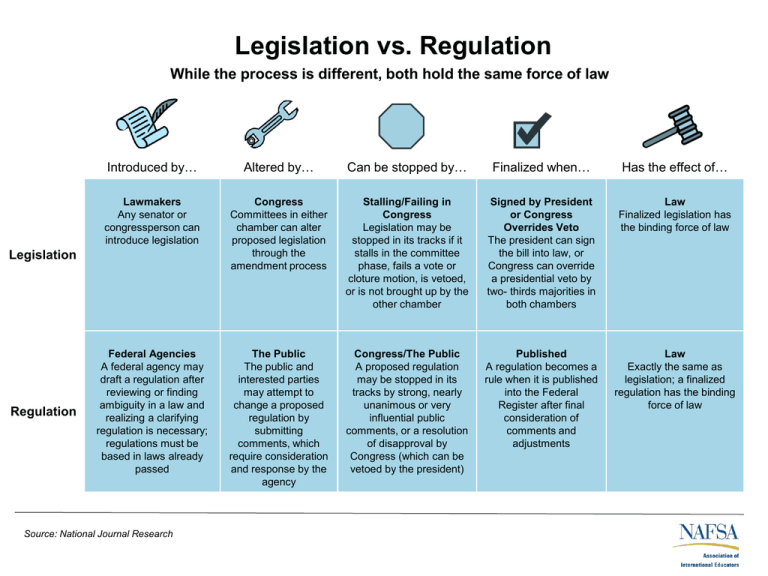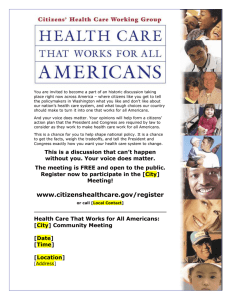Legislation vs. Regulation
advertisement

Legislation vs. Regulation While the process is different, both hold the same force of law Introduced by… Altered by… Can be stopped by… Finalized when… Has the effect of… Lawmakers Any senator or congressperson can introduce legislation Congress Committees in either chamber can alter proposed legislation through the amendment process Stalling/Failing in Congress Legislation may be stopped in its tracks if it stalls in the committee phase, fails a vote or cloture motion, is vetoed, or is not brought up by the other chamber Signed by President or Congress Overrides Veto The president can sign the bill into law, or Congress can override a presidential veto by two- thirds majorities in both chambers Law Finalized legislation has the binding force of law Federal Agencies A federal agency may draft a regulation after reviewing or finding ambiguity in a law and realizing a clarifying regulation is necessary; regulations must be based in laws already passed The Public The public and interested parties may attempt to change a proposed regulation by submitting comments, which require consideration and response by the agency Congress/The Public A proposed regulation may be stopped in its tracks by strong, nearly unanimous or very influential public comments, or a resolution of disapproval by Congress (which can be vetoed by the president) Published A regulation becomes a rule when it is published into the Federal Register after final consideration of comments and adjustments Law Exactly the same as legislation; a finalized regulation has the binding force of law Legislation Regulation Source: National Journal Research






